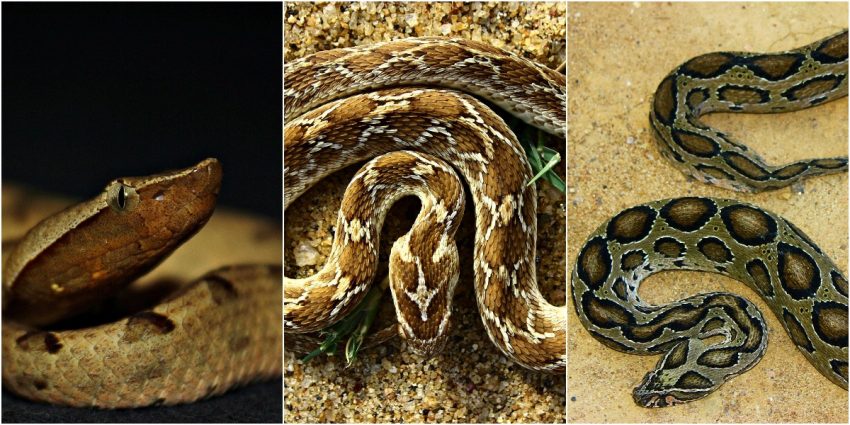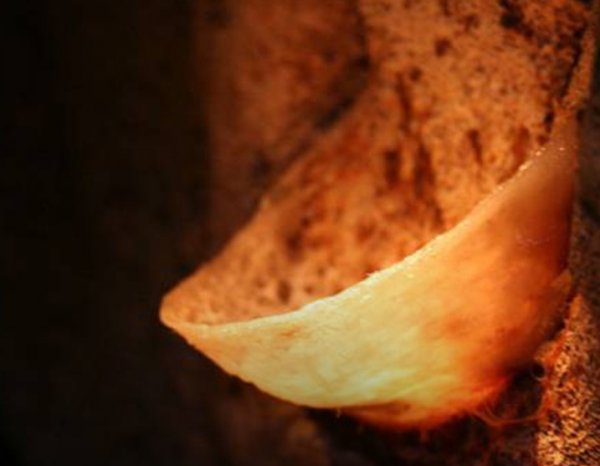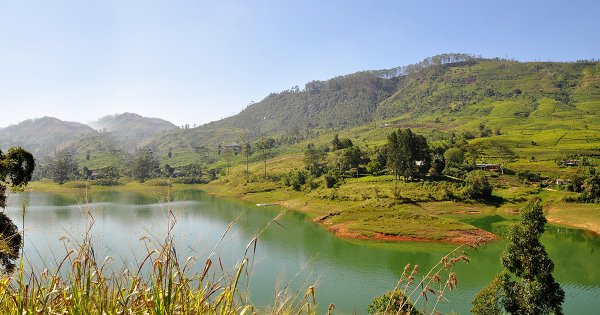
An inconspicuous little culvert along the Minneriya-Polonnaruwa route has become an unusual tourist attraction. While usually seen alone or in a pair, this shaded waterhole — aptly named the ‘Kabara Bokkuwa’ (කබර බොක්කුව) — is home to a bank of some 15 kabaragoya, Asian water monitors (Varanus salvator salvator) that has formed a rather peculiar reciprocal relationship with a local man.
Sunil Senaratne (57) is a small, bright-eyed man, with a big smile. For over 40 years, Senaratne has been feeding these large lizards and has managed to tame them to respond to his call.
“Back then, there were no big roads and this whole area was a patch of forest,” he said. “We used to collect leftover fish and throw them into the bushes and the water monitors used to come and pick them from the bush. With time, they got used to our presence.”
While sharing these stories, Senaraten, slowly but deliberately, tapped his thigh. And like a puppy responding to its human, the solitary monitor waddled over eagerly, hoping for a quick snack.

The Asian water monitor is a subspecies endemic to Sri Lanka, protected by the Fauna and Flora Protection Ordinance of 1937. It is one of the largest species of lizards and is widely distributed in Sri Lanka, both in rural and urban areas.
His brother was the first to notice the lizards lounging near the culvert and thought of taming them. He told Senaratne to wait at the ‘bokkuwa’ while he brought tourists to see the animals in their habitat. Their venture has expanded over the year, and now, many local guides bring tourists to see the man and his water monitors.
A decade or so ago, Senaratne recalled, the regional office of the Ministry of Tourism erected a notice board for the culvert in Minneriya. “This brought in a lot of tourists,” he said. “The tourists come and watch us feed the kabarayo. Sometimes they offer money, but we don’t depend on that.”
Senaratne is a simple man, who earns an income by selling fabric and clothes at the local market. When he’s at the market, his brother or a friend sits near the culvert to feed the monitors and entertain any tourists that stop by.
“There are around 10-15 kabarayo here in the morning. Only this chap waits till evening. Everyone else swims upstream to rest,” Senaratne said, gesturing affectionately at one monitor, slowly headed back to the water, realising that no fish will be offered this time. “This one is about nine years old. Normally, they will go on to live for about 30-40 years.”
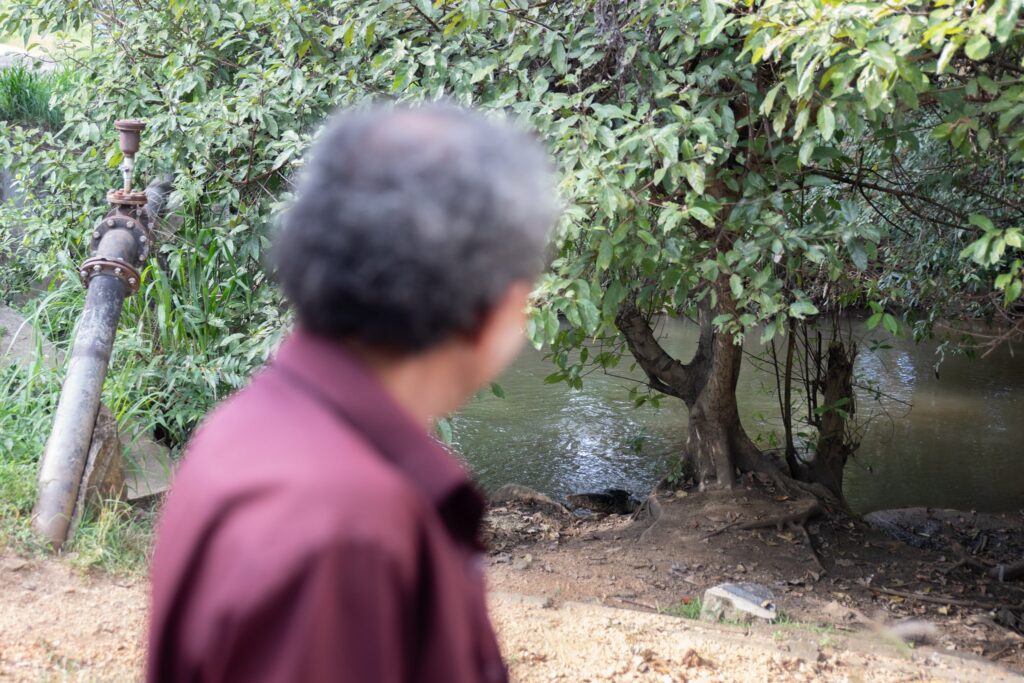

“This fellow is annoyed because I didn’t offer them any fish. So now they’re refusing to come again. They are smart and they probably know sometimes I’m calling just for fun,” Senaratne added teasingly, almost as if he was talking about an old school friend.
“This one is the tamest. There’s a fiery one too. If we try to tease that chap with the fish, it gets angry and lashes out with its tail. If we don’t move away, we’ll get injured.”
He continued while reaching for the bucket of fish: “Ah, and did I tell you they sometimes lick our feet? If we sit really still, they know we’re not a threat. It’s important they get used to us,” he chuckled.
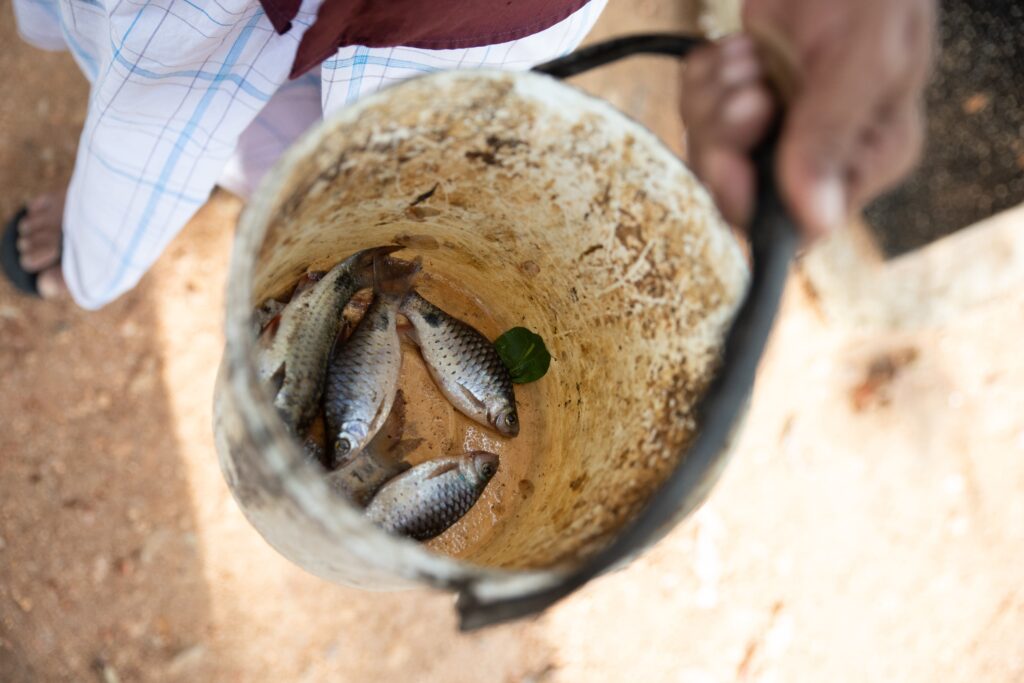

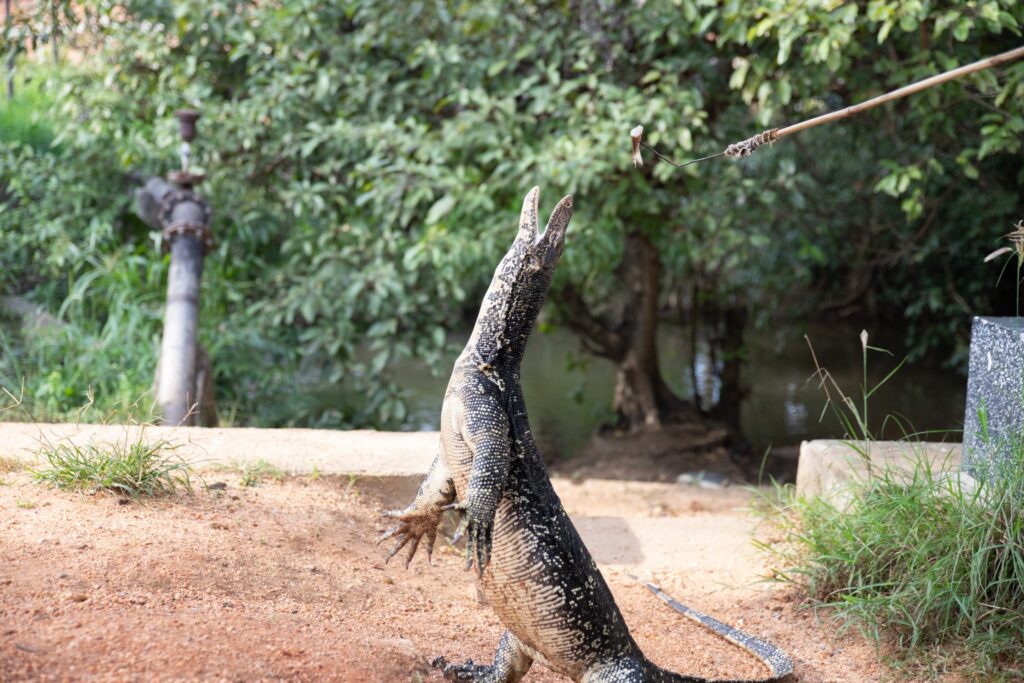
With a piece of fish hooked to a wooden stick, he lured the excited reptile closer. His tease work: for an animal that is usually seen idling in the sun or seen swimming swiftly in the water, this one was animated at the sight of the fish. Water monitors are both pursuing predators as well as scavengers.
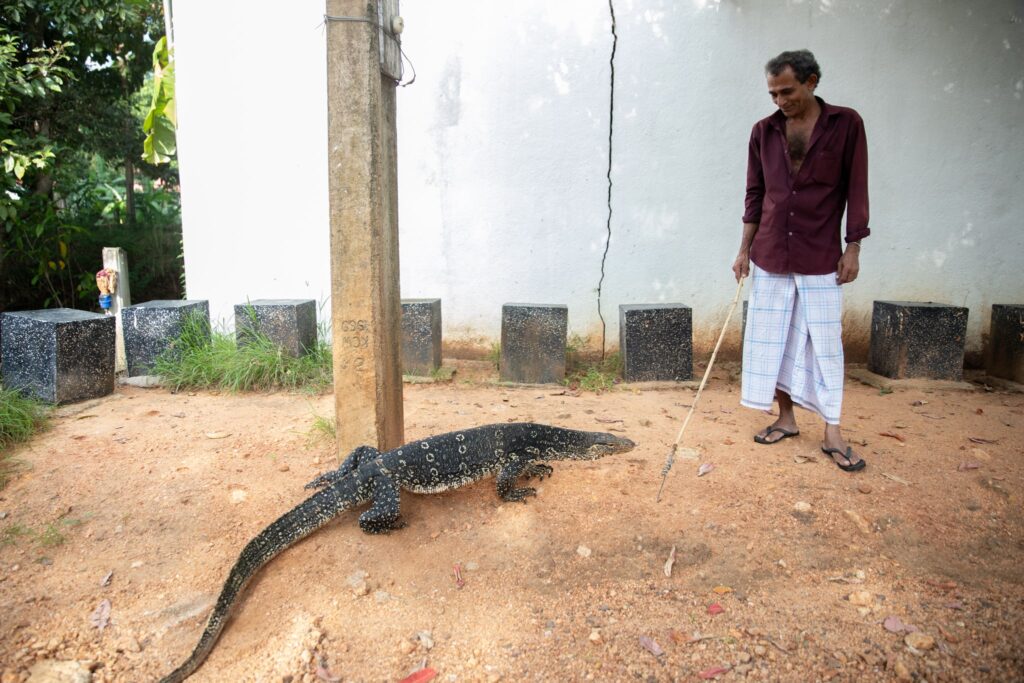
After feeding, the two shared a quiet moment together. With the same stick, he used to feed the animal, Senarate gently caressed the water monitor’s head. This cold-blooded and primaeval beast, with their eyes half shut, seemed to enjoy the affection.

